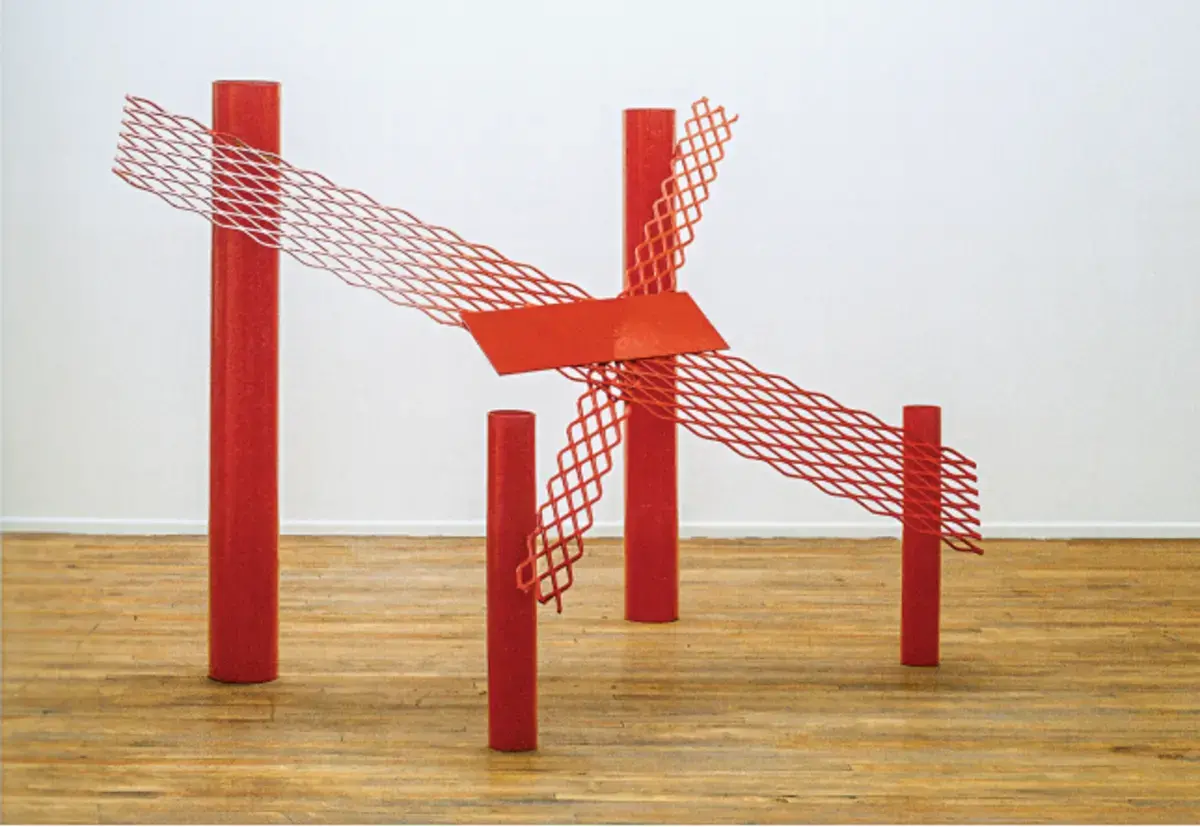Isherwood On Caro
Faculty member Jon Isherwood on the renowned sculptor and former faculty member Sir Anthony Caro.

The first Anthony Caro sculpture I ever encountered was called Red Splash (1966), and I was furious. I was fifteen years old and had just completed a high school metal shop project. The pride of my achievements was a four-part tubular candlestick holder with diagonal bracing—and someone had stolen my idea! How could this be and how could this have happened and what was to be done?!
It was another five years before I met this artist in person and ultimately received the best possible education in how to reconcile influence, inspiration and artistic contribution.
Throughout my third year at Canterbury College of Art, I would travel up to London on the weekends and work in Tony’s studio. Instructions chalked directly on the sculptures would be the guide for the weekend’s work. The solitude of this creative environment was both a gift and a lesson. Refabricating and welding the inevitable corrections and adjustments was like being inside the artist’s head. I got to share the eye of the creator as the work was pushed towards refinement. The second lesson was even greater: don’t get attached to your work! Tony’s process meant that a sculpture would be worked, changed and reworked, many times. I remember the disappointments when what I thought was a finished piece that I had carefully welded and cleaned and prepared as if ready to leave for the gallery would be cut in half, turned upside down and completely reconfigured the following weekend.
Tony said he was always glad to get the work out into the clean space of the gallery to finally see the sculpture. In his words, “At last it stands on its own, not in the shelter of your environment. You can make decisions about it and about where it leads. In the studio you are close to what you make.” But for me, the studio was the place where I saw the work the clearest. It was raw and alive. And every day revealed something new.
Open books were very much a part of the studio landscape. Art history was as much a material as were the steel, clay, wood, wax, etc. that we worked with. Looking at paintings and sculpture was like going to the scrap pile and selecting provocative and challenging shapes to work with. Rembrandt and Rubens were partners, Picasso and Matisse break-time guests. The work of these artists would be the high bar that each and every sculpture and concept would be tested against.
It was not only great works of art that set forth a challenge but in essence the simple proposal that sculpture can develop out of anything. There were many occasions on which this idea was tested; I remember one in particular. Tony had been awarded an honorary degree from Yale and after the ceremony he wanted to buy a gift for his recently born grandchild. In the shop at the Yale Center for British Art we discovered a set of wooden building blocks, architectural in style with columns and arches…the perfect gift! The drive back up to the Barford North studio was full of conversation about puzzles, play, presentation and packaging. Could miniature-scale and life-scale objects work together? Could one evoke grand scale through intimate scale? What were de Chirico and Magritte getting at in the depiction of those surreal interiors? This could have been the time we came up with the word “sculpitecture.” Back at the studio, we moulded all of the building blocks in wax including the fine wooden box the set was in. Then we cast the Styrofoam packing from the new TV for the apartment, the oxyacetylene gauges, the toilet plunger, the shapely case of wine that came from the Emmerich gallery, etc., etc. All became forms to investigate. I would estimate that at least sixty sculptures came from that simple 30 x 30 cm (12 x 12 in) box of building blocks—including a truly great piece called Forum (1992-1994).
By the mid-nineties I had stopped working for Tony and our relationship changed. I had been the apprentice, but we became peers. Our conversations moved to what were still uncharted questions for sculpture. My last conversation with Tony was in February 2013. I asked him about the idea of “navigation” in the relationship to the artwork. We talked about getting lost and finding our way. We talked about swimming, snorkeling, and sensing one’s body in the water: a displaced sense of gravity. What materials and forms would describe the sensation of being in water up to one’s waist or chest, recognizing you have deeper water in front of oneself and that land is behind, descending through a transparent medium, with an ever-changing perspective on one’s horizon? Could a sculpture capture the feeling of those sensations?
At the end of our session together I finally plucked up the courage to ask him whether my high school candlestick holder had inspired Red Splash. He replied that sadly, no, it had been Jackson Pollock.
This has been a reprinted reflection on Sir Anthony Caro written by Bennington faculty member Jon Isherwood. It was included in the recently published book CARO (Phaidon, 2014). Isherwood was one of a select group of contemporary artists who contributed to a series of essays celebrating the artist and his work.